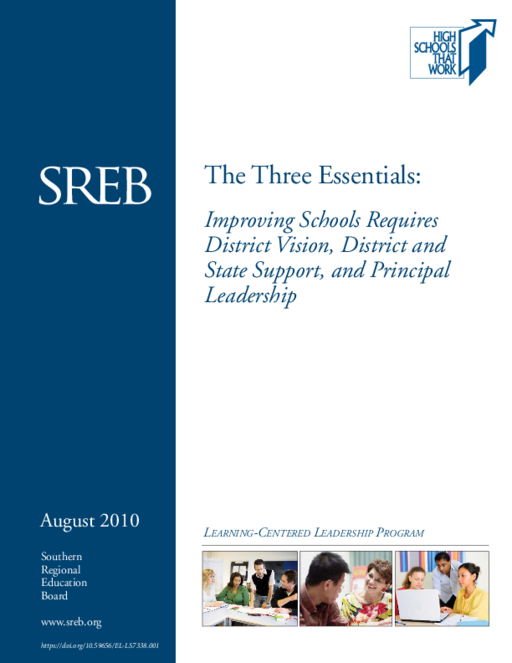- Author(s)
- Gene Bottoms and Jon Schmidt-Davis
- Publisher(s)
- Southern Regional Education Board
Research Approach
The purpose of this study is to illuminate how districts support principals to improve student learning. Participating districts were selected from three Southern Regional Education Board (SREB) states. District selection criteria were designed to yield a sample that was representative of the 16-state SREB region, based on district size, demographics, and student achievement. To protect the identity of districts and respondents, each district is assigned a fictitious name in this report.
SREB staff worked with superintendents’ offices to identify six leaders in each district for interviews. Desired respondents included:
- the superintendent.
- the school board chair or other board member.
- chief district officers for curriculum and instruction, professional development, assessment and accountability, and business operations.
SREB staff conducted all interviews by telephone, and the recorded interviews were transcribed. SREB research staff coded the interviews to identify common and recurring themes. The seven strategies served as a theoretical framework for coding the transcripts, with an initial set of approximately 50 codes identified for likely responses that were then expanded upon as the interviews and coding work progressed. Codes were added to the electronic transcripts, allowing staff to reference individual passages to verify context and meaning, while preserving the richness of the original source material and maintaining a close connection between findings and underlying data.
Staff analyzed the frequency and distribution of responses and classified them as indicative of high or low support for principals. The criteria for “highly supportive” comments were identified through researching the existing literature on school reform, principals’ working conditions, and district office reform, and through the positive examples mentioned in multiple interviews of what effective districts do to support the work of principals. The quality of responses was considered from the perspective of a wide range of best practices previously identified in other research. A process of peer debriefings was used with SREB senior staff and consultants to validate many of the findings, especially those that seemed unexpected, contradictory, or counterintuitive.
An overall level of district support then was calculated by determining the average number of positive/supportive comments per respondent. These composite scores revealed three tiers of district support: highly supportive (more than 40 supportive comments per interview); moderately supportive (30 to 40 supportive comments per interview); and minimally supportive (fewer than 30 supportive comments per interview). The interviewees included 10 respondents from the two highly supportive districts, nine from the two moderately supportive districts and 16 from the three minimally supportive districts.














